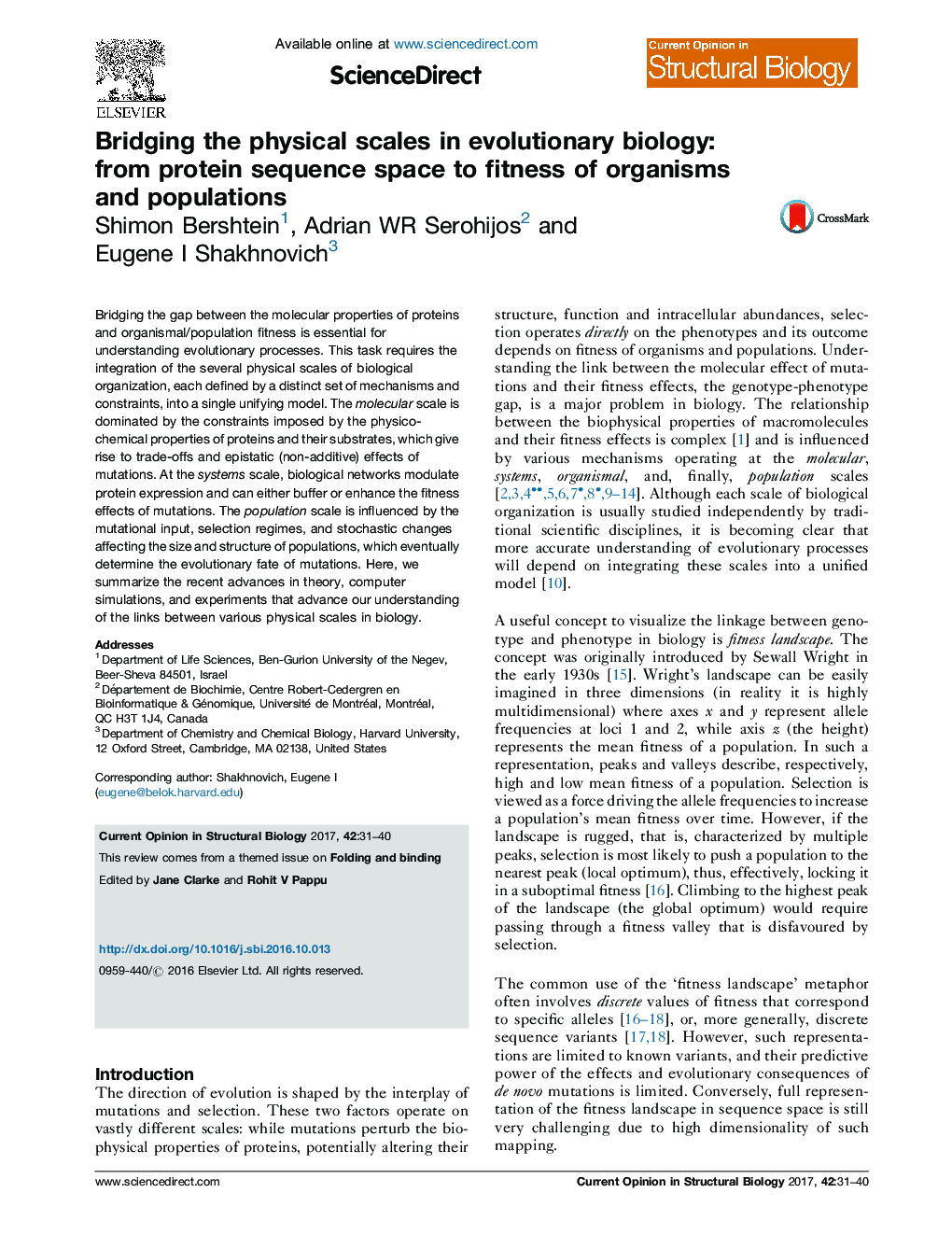| Article ID | Journal | Published Year | Pages | File Type |
|---|---|---|---|---|
| 5510876 | Current Opinion in Structural Biology | 2017 | 10 Pages |
Abstract
Bridging the gap between the molecular properties of proteins and organismal/population fitness is essential for understanding evolutionary processes. This task requires the integration of the several physical scales of biological organization, each defined by a distinct set of mechanisms and constraints, into a single unifying model. The molecular scale is dominated by the constraints imposed by the physico-chemical properties of proteins and their substrates, which give rise to trade-offs and epistatic (non-additive) effects of mutations. At the systems scale, biological networks modulate protein expression and can either buffer or enhance the fitness effects of mutations. The population scale is influenced by the mutational input, selection regimes, and stochastic changes affecting the size and structure of populations, which eventually determine the evolutionary fate of mutations. Here, we summarize the recent advances in theory, computer simulations, and experiments that advance our understanding of the links between various physical scales in biology.
Related Topics
Life Sciences
Biochemistry, Genetics and Molecular Biology
Biochemistry
Authors
Shimon Bershtein, Adrian WR Serohijos, Eugene I Shakhnovich,
